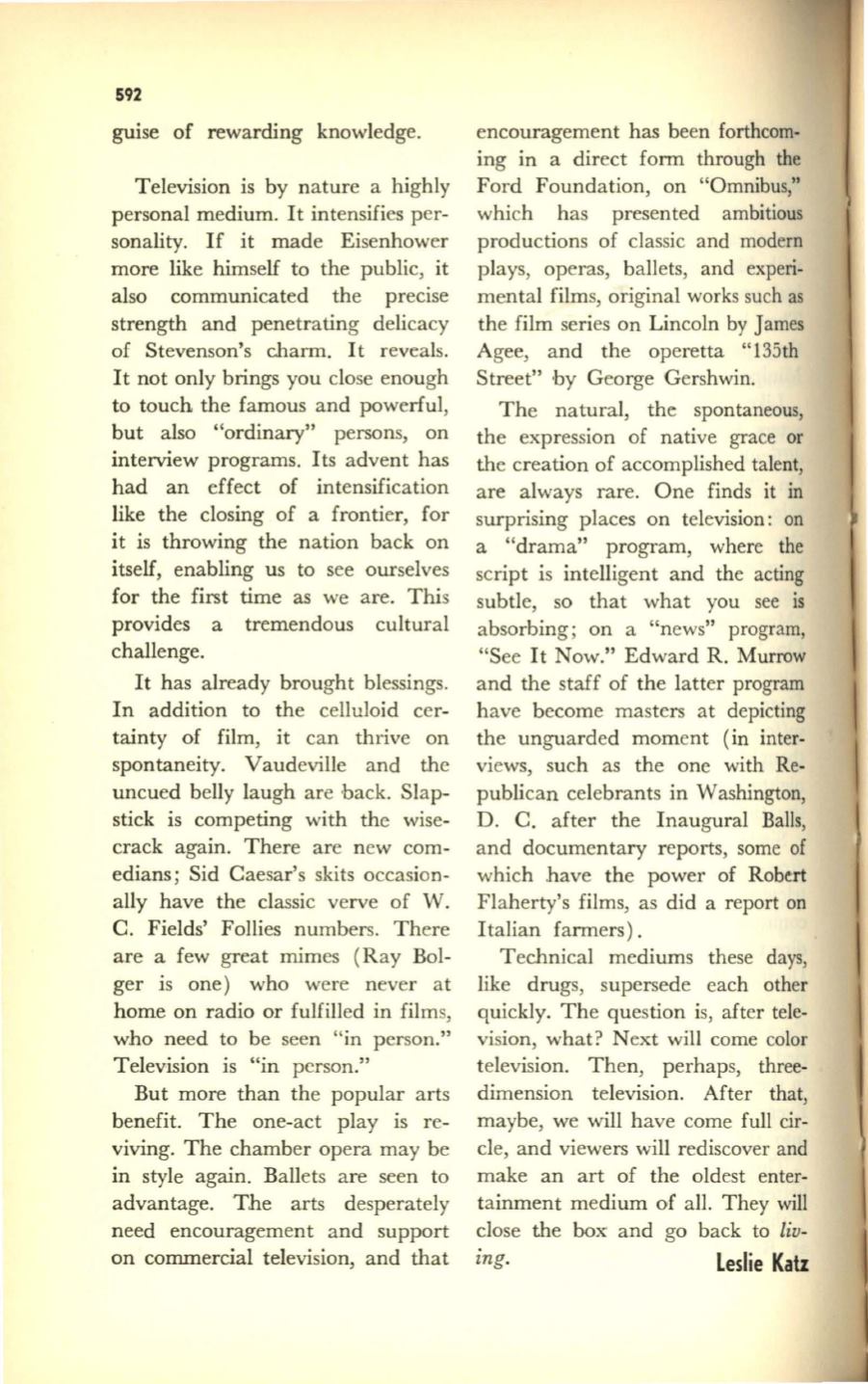
592
guise of rewarding knowledge.
Television is by nature a highly
personal medium. It intensifies per–
sonality.
If
it made Eisenhower
more like himself to the public, it
also communicated the precise
strength and penetrating delicacy
of Stevenson's charm. It reveals.
It not only brings you close enough
to touch the famous and powerful,
but also "ordinary" persons, on
interview programs. Its advent has
had an effect of intensification
like the closing of a frontier, for
it is throwing the nation back on
itself, enabling us to see ourselves
for the first time as we are. This
provides a tremendous cultural
challenge.
It has already brought blessings.
In addition to the celluloid cer–
tainty of film, it can thrive on
spontaneity. Vaudeville and the
uncued belly laugh are back. Slap–
stick is competing with the wise–
crack again. There are new com–
edians; Sid Caesar's skits occasion–
ally have the classic verve of W.
C. Fields' Follies numbers. There
are a few great mimes (Ray Bol–
ger is one) who were never at
home on radio or fulfilled in films,
who need to be seen "in person."
Television is "in pcrson."
But more than the popular arts
benefit. The one-act play is re–
viving. The chamber opera may be
in style again. Ballets are seen to
advantage. The arts desperately
need encouragement and support
on commercial television, and that
encouragement has been forthcom–
ing in a direct form through the
Ford Foundation, on "Omnibus,"
which has presented ambitious
productions of classic and modern
plays, operas, ballets, and experi–
mental films, original works such as
the film series on Lincoln by James
Agee, and the operetta
"135th
Street" by George Gershwin.
The natural, the spontaneous,
the expression of native grace or
the creation of accomplished talent,
are always rare. One finds it
in
surprising places on television: on
a "drama" program, where the
script is intelligent and the acting
subtle, so that what you see is
absorbing ; on a "news" program,
"See It Now." Edward R. Murrow
and the staff of the latter program
have become masters at depicting
the unguarded moment (in inter–
views, such as the one with Re–
publican celebrants in Washington,
D . C. after the Inaugural Balls,
and documentary reports, some of
which have the power of Robert
Flaherty's films, as did a report on
Italian farmers).
T echnical mediums these days,
like drugs, supersede each other
quickly. The question is, after tele–
vision, what? Next will come color
television. Then, perhaps, three–
dimension television. After that,
maybe, we will have come full cir–
cle, and viewers will rediscover and
make an art of the oldest enter–
tainment medium of all. They
will
close the box and go back to
liv-
ing.
Leslie Katz


